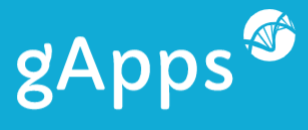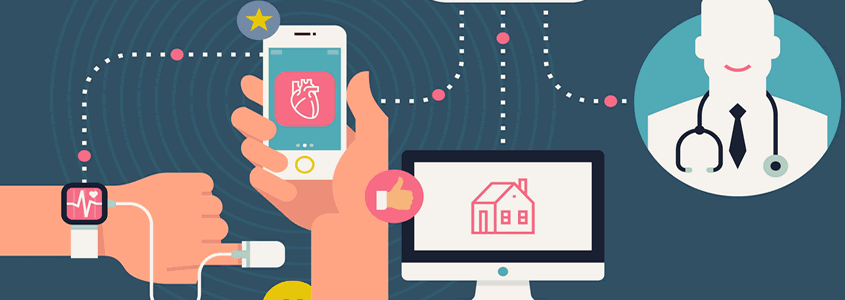Tips for designing a medical app – is connectivity on your list?
One of of the gApps team came across an interesting discussion on LinkedIn titled: “One tip for designing a medical device.”
Members of one of the medical device groups were being asked to share their views on what advice they would give someone when it came to designing a medical device?
The post as you can imagine got a great deal of response (the group currently has over 320,000 members). I read through the responses with interest and although all the responses were well considered. Some of the advice shared was:
“I would recommend co-development of the product with the customer. This provides clear understanding by both parties of what the design requirements are, what testing is required, expected costs, lead times, design for manufacturability issues, and mostly, you have the most important thing, at least one customer.”
“In my past we were successful by starting a voice of customer assessment and convert that into a list of customer requirements. Then have R&D translate that into functional spec of what they could provide and on top of that what other features or capabilities that customers are not aware of. Then a negotiation occurs where there are mismatches and confirmed with customers. In parallel how will it be verified and validated, sample availability, collaborations needed? Then and only then do we start development.
“Ask the customer exactly what they need and why, what are the features they could not do without? Would this new product get then to move away from what they already use, and why, why not? ensure they get just that… and quickly. Then ensure their experience is backed up with service.”“Most of the time customers, don’t really know very clearly what their needs are, especially physicians. But patients, caregivers probably understand better way what can help them and what they are willing to pay for it. Latin America still needs help in rural medicine: handle chronic disease, early diagnosis especially in oncology. I agree about co-development.
As you can expect with any conversation around new product development there is this recurring theme of start with the end-user. And this is all sound advice and as a marketer this notion that the customers’ needs drive the NPD process is etched into my brain. But it also got me thinking that when it comes to medical devices we should also be considering how we can take advantage of new technological advances taking place and look for opportunities to future-proof any device that we are looking to design. This will help to increase the product’s shelf-life as well as improve the product’s chances of generating a healthy return on investment. But as we know technology is moving faster than ever so this becomes and an even greater challenge for medical device manufacturers.
One area that can sometimes get missed during the initial concept and business analysis phases is “connectivity” – so assessing the capacity for the interconnection of platforms, systems, and applications. We would most certainly be bringing connectivity to the table early on in the process and exploring how mobile technologies could help to improve the user experience and also the cost effectiveness of developing such a device.
Here are some examples of companies that have benefited from developing medical device apps and apps that connect with existing hardware devices:
Improving end-user experience
- Control interfaces: OvuSense streamlines the user experience taking advantage of high res screens with more real estate to graphically monitor temperatures and get fertility predictions compared the original black and white LCD screen on the original hardware product http://www.ovusense.com/uk/
- Portability and access: Rosemont Pharma changed a very large ring bound folder which references their entire product range and has consolidated all the information into an online database which is updated to an app every time the app is opened and fits in the pocket. The app also included a dosage calculator (CE Marked) to make it easy for HCPs to calculate the dosage requirements based on key factors: https://www.rosemontpharma.com/prg/
- On Demand: Dr Now / Push Doctor, these types of on demand apps are the future of medical services. Real time access to medical professionals when required with minimum disruption to your own schedule. http://www.drnow.com/ http://www.pushdoctor.co.uk/
- Data sharing and analysis: Diabetes apps like enable patients to accurately monitor their blood sugar levels and at the same time automatically share this data with healthcare professionals who can monitor their patients remotely and intervene if necessary. http://www.mystarsanofi.com/web/products/glucometers/ibgstar
Cost of development
- Less investment in hardware: Fertility Focus have moved away from the physical production of a hardware reader to an app that utilises the hardware within a device. This massively reduces the investment in manufacturing and enable a constant evolution of the product features http://www.ovusense.com/uk/
- Concept testing / rapid prototyping: The Instant Weight For Height calculator was prototyped and tested by healthcare professionals to make sure it was easy to use and complex calculations would be simple to interpret before going to the coding stage. This allowed for a much quicker development cycle having ironed out any design issues before hand
- Updating firmware: Fitbit is a good example of where the product software or firmware is constantly evolving to incorporate customer feedback and improve user experience. Distribution is over the air via an app update which in turn updates the firmware on the wrist band. http://www.fitbit.com
- Distribution: The distribution and update of apps has become a seamless process with both Apple and Android devices performing automatic updates for the apps running on their devices. This massively improves reliability of the apps, the devices and is a simple push to an app store that then distributes the apps to millions of devices. http://www.apple.com http://www.android.com

